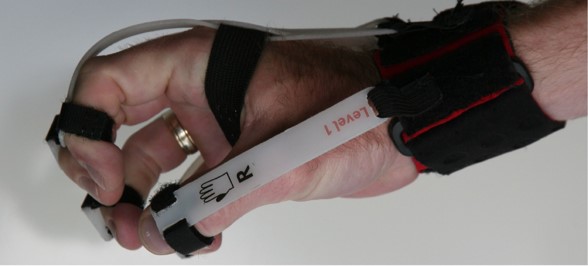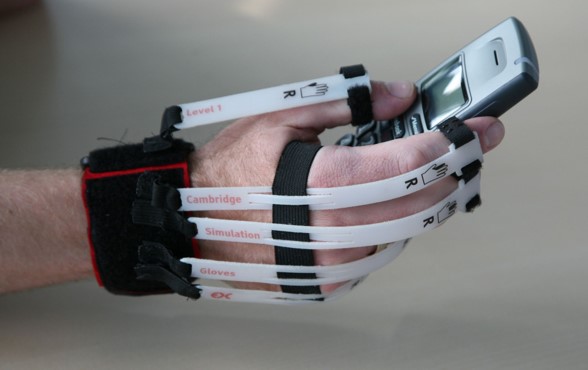*UK price, which includes delivery & VAT. Worldwide prices vary.
A 10% discount is available for orders of 5+ pairs of gloves, and payments can be made through invoicing your institution. For details, please contact:
edc-toolkit@eng.cam.ac.uk
Why should I buy them?
The Cambridge simulation gloves provide insight into how limitations in hand movement can affect product use. Such limitations can be caused by various conditions such as arthritis. The gloves can build empathy with users, and can be used to examine the accessibility of products and services, helping to create better, more inclusive designs. Find out more about what the gloves do below.
Buy small gloves (£155*)
Buy large gloves (£155*)
Watch this video to see the gloves in action.
What do the gloves do?
The Cambridge simulation gloves simulate a reduction in the functional ability of the hands. In particular, they use plastic strips to limit the strength and range of motion of the fingers and thumb. Various conditions, such as arthritis, can cause effects like these. As an example, these gloves will make it much more difficult to use a knife and fork, simulating the difficulties that people with arthritis of the knuckles have in gripping small handles.
Please note that impairment simulation cannot convey what it is really like to live with capability loss on an everyday basis. In particular, the gloves do not simulate other common effects such as pain, tremor, loss of tactile sensitivity and changes to the shape of the hand that occur with ageing. Furthermore, they do not simulate any problems with the wrists. As an example, using a touchscreen keyboard on a mobile phone remains relatively easy with the gloves but is particularly difficult for people with tremor.
Therefore, these gloves are intended to be used in combination with other tools as part of a holistic inclusive design evaluation (described within the Evaluate part of the Process section of this website).
The gloves can be used to help people to empathise with those with dexterity impairment, and to compare the demands placed by different products on dexterity. The harder a product is to use while wearing the gloves, the more demand it places on dexterity and the more inaccessible it is. Conversely, if a product remains comfortable to use while wearing these gloves, then it is likely to be more comfortable for a broad range of users.
Feedback
We would welcome your feedback on this page:
Privacy policy. If your feedback comments warrant follow-up communication, we will send you an email using the details you have provided. Feedback comments are anonymized and then stored on our file server. If you select the option to receive or contribute to the news bulletin, we will store your name and email address on our file server for the purposes of managing your subscription. You can unsubscribe and have your details deleted at any time, by using our Unsubscribe form. If you select the option to receive an activation code, we will store your name and email address on our fileserver indefinitely. This information will only be used to contact you for the specific purpose that you have indicated; it will not be shared. We use this personal information with your consent, which you can withdraw at any time.
Read more about how we use your personal data. Any e-mails that are sent or received are stored on our mail server for up to 24 months.





